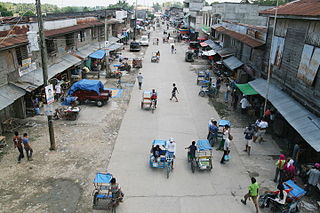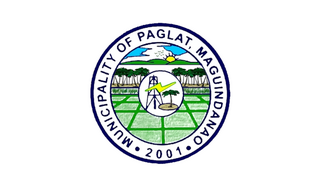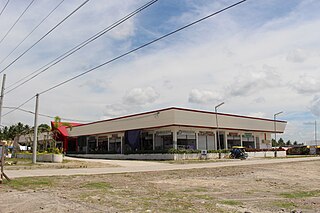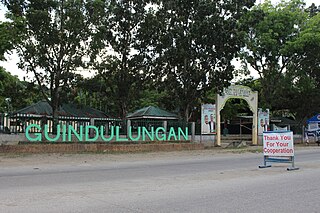Shariff Saydona Mustapha شريف سيدونا مصطفى | |
|---|---|
| Municipality of Shariff Saydona Mustapha | |
 Map of Maguindanao del Sur with Shariff Saydona Mustapha highlighted | |
 | |
Location within the Philippines | |
| Coordinates: 6°58′34″N124°28′53″E / 6.976053°N 124.481478°E | |
| Country | Philippines |
| Region | Bangsamoro Autonomous Region in Muslim Mindanao |
| Province | Maguindanao del Sur |
| District | Lone district |
| Founded | July 30, 2009 |
| Barangays | 16 (see Barangays) |
| Government | |
| • Type | Sangguniang Bayan |
| • Mayor | Sajid Andre S. Ampatuan |
| • Vice Mayor | Datu Sajid Islam U. Ampatuan |
| • Representative | Mohamad P. Paglas Sr. |
| • Municipal Council | Members |
| • Electorate | 8,814 voters (2022) |
| Area | |
| • Total | 164.42 km2 (63.48 sq mi) |
| Elevation | 8.0 m (26.2 ft) |
| Highest elevation | 46 m (151 ft) |
| Lowest elevation | 0 m (0 ft) |
| Population (2020 census) [3] | |
| • Total | 25,080 |
| • Density | 150/km2 (400/sq mi) |
| • Households | 4,494 |
| Economy | |
| • Poverty incidence | 40.52 |
| • Revenue | ₱ 101.5 million (2020) |
| • Assets | ₱ 39.19 million (2020) |
| • Expenditure | ₱ 100.9 million (2020) |
| • Liabilities | ₱ 5.231 million (2020) |
| Service provider | |
| • Electricity | Maguindanao Electric Cooperative (MAGELCO) |
| Time zone | UTC+8 (PST) |
| ZIP code | 9608 |
| PSGC | |
| IDD : area code | +63 (0)64 |
| Native languages | Maguindanao Tagalog |
Shariff Saydona Mustapha, officially the Municipality of Shariff Saydona Mustapha (Maguindanaon: Inged nu Shariff Saydona Mustapha; Iranun: Inged a Shariff Saydona Mustapha; Tagalog : Bayan ng Shariff Saydona Mustapha), is a municipality in the province of Maguindanao del Sur, Philippines. According to the 2020 census, it has a population of 25,080 people. [3]
Contents
It was created out of 4 barangays from the municipality of Shariff Aguak, 4 entire barangays and a portion of one barangay from Mamasapano, 2 barangays from Datu Unsay, one barangay from Datu Piang, and 3 entire barangays and a portion of one barangay from Datu Saudi-Ampatuan by virtue of Muslim Mindanao Autonomy Act No. 225 [5] (as amended by MMAA Act No. 252), which was subsequently ratified in a plebiscite held on July 30, 2009.
Shariff Saydona Mustapha was an Arab missionary from Mecca and a paternal uncle of Shariff Kabungsuwan of Johore (the first Sultan of Maguindanao). He arrived in Mainland Mindanao in the mid-15th century. He is the ancestor of the Ampatuan, Mangacop, Masukat and Sangki clans of Maguindanao.






















